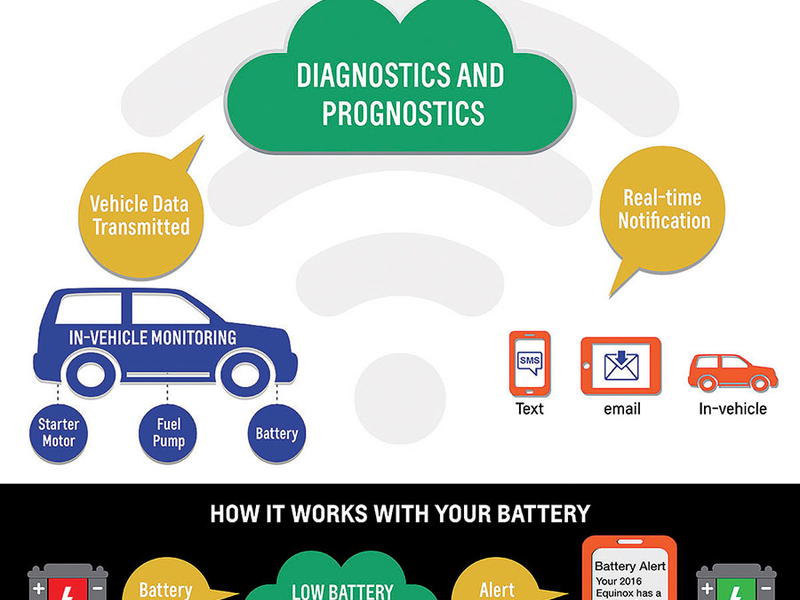
Ever been stuck on the road far from home with a breakdown? Not fun. So imagine getting an email or text warning weeks or months before a starter quits, a battery dies or a fuel pump fails. Some of General Motors’ connected-car owners are already getting alerts for the service bay.
Thanks to an engineering discipline called prognostics, carmakers are working on giving customers a digital warning before a check-engine light comes on. Prognostics tap sensors to monitor starting, charging and running systems, and telemetry hardware sends vehicle health messages to the automaker’s centralized processing operation.
Algorithms and artificial intelligence weigh the results and determine the remaining service life of critical components — and whether to trigger a warning.
“The most obvious benefit is peace of mind,” says Jim Kelly, GM program engineering manager for vehicle health. “These issues are very rare, but our customers can sleep easy knowing that they are protected by our ability to predict them before they happen.”
GM has offered its Proactive prognostics system with customer warnings via OnStar since the 2015 model year in some SUVs and pickups and the Chevrolet Corvette, and it has added more vehicles since.
“In the rare instance that we do predict an issue,” says Kelly, “a Proactive alert transforms a potentially dissatisfying customer experience into a scheduled maintenance visit.”
He says customers who get Proactive alerts are 50 percent less likely to experience a towing event related to the component involved.
Some other automakers, including Ford and BMW, are working with their suppliers to incorporate prognostics into their portfolios. This area will gain importance with two of the major predicted changes in the auto business:
First, automakers introducing electric vehicles are especially concerned with the health of their large lithium ion traction batteries since they represent a significant chunk of the vehicle’s cost and warranty burden. Even small battery-cell degradations can provide early warning of possible battery failure.
Second, the more expensive self-driving cars of the future, which will operate almost continuously without a driver to notice problems, will be monitored closely using onboard telemetry to ensure right-priced, on-time service.
Clint Perry, a diagnostics service expert at supplier Bosch, describes prognostics as an area of “high interest across the industry currently” because vehicle connectivity is becoming more common. He could not address specific customers but said commercial fleets, including aircraft, are ahead of retail applications on connectivity and prognostics. He said that was largely because of the economics of fleet vehicles as “revenue-generating” vehicles.
“Automotive prognostics is the ability to predict the point in time when a component or system will no longer perform its intended function,” Perry explains. “And at that point, you alert the user. In the case of EVs, it’s important for multiple reasons. Many electric vehicles are bringing new, more sophisticated electrical architectures with computers and connectivity. So this is enabling tech for auto prognostics.”
Perry says EVs also require technicians to have new skills to diagnose and fix problems. He observed that prognostics should help make repairs easier to plan and execute, vs. sudden, serious roadside events.
“That’s what we’re really trying to avoid,” he says. “So within the next five years, you’ll see many more automakers will introduce systems that include prognostics. That’s safe to expect.”